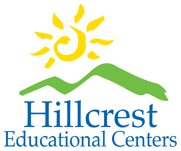A) Goals:
To ensure —
1. The continuity of essential functions and services.
2. The safety and well-being of students and staff.
3. The emergency delegation of authority, as necessary.
4. The adequate and accurate documentation of pandemic management activities and risk management activities vital to the agency.
************************************************
B) Assumptions:
1. Significant numbers of students and staff may be affected by seasonal flu and PANDEMIC ILLNESS.
2. Staff levels may be significantly reduced due to high levels of illness and hospitalization.
3. Remaining workers may be psychologically affected by disease, family concerns, concerns about economic loss, or fear, and require behavioral assistance.
4. Staff may be reduced by the need for some workers to attend to family illness or to children remaining at home due to school closures.
5. Staffing reductions may be temporary or long-term.
6. Local and regional support resources and infrastructure may be negatively affected. (e.g., schools, medical facilities, transportation systems, supply chains.)
************************************************
C) Staffing Thresholds Premises
1).. Each RTC staffs at 1 to 3 staff over ratio on each shift including the Supe and Asst. Supe.
2) HC has 1 Supe and 3 Asst. Supes on the Academic and Residential shifts, and 1 Supe and 1 Asst. Supe on the Overnight shifts. (= 10 supe staff per day).
HP has 1 Supe and 2 Asst. Supes on the Academic shift, and 1 Supe and 3 Asst. Supes on the Residential shifts, and 1 Supe and 2 Asst. Supe on the Overnight shifts. (= 10 supe staff per day)
BS/ITU has 1 Supe and 2 Asst. Supes on the Academic and Residential shifts, and 1 Supe and 1 Asst. Supe on the Overnight shifts. (= 5 supe staff per day)
3) If necessary to remain at required staff : student ratio, some number of supervisory staff can move “into the count”.
4) Absences for all employees, both DC and non-DC employees, throughout the year, including ‘flu season’, average 6.1/day, with a range from 4.2/day to 8.7/day.
5) It is neither necessary nor practical to develop thresholds for Non-Direct Care staff because any urgency associated with their absence depends directly on their location, role, function and the depth of backup available for their role / position. .
************************************************
D) Activities and functions covered by the PM Plan :
1. Prevention (PR)
2. Mitigation (MI)
3. Continuity of Essential Operations & Functions (CO)
4. General flu related activities (e.g., information, communications, reassurance, ensuring lines of leadership/authority) (GEN)
************************************************
E) Levels of threat/contagion, key indicators, operational status:
Essential activity: close monitoring and reporting of student illnesses and
staff absences.
Level 1 – “Routine” conditions –
a) relatively low and relatively stable frequencies
of flu cases among students and of staff absences .
b) No noticeable increase in cases or staff absences.
• Operations are essentially unaffected or only slightly affected. Few, if any, operational modifications are needed.
Level 2 – “Elevated” conditions –
a) higher than average incidence of flu cases among students and
of staff absences.
b) notably increasing numbers of cases
• Operations are affected and operational modifications are indicated or necessary.
Level 3 – “Emergency” conditions –
a) abnormally high numbers of cases and/or of staff absences
b) sharply climbing numbers of cases among students and staff absences.
c) unusually severe symptoms
• Operations are significantly affected; devolution of function and/or authority and major modifications of operations are required.
Primary goal is continuity of essential functions and operations.
